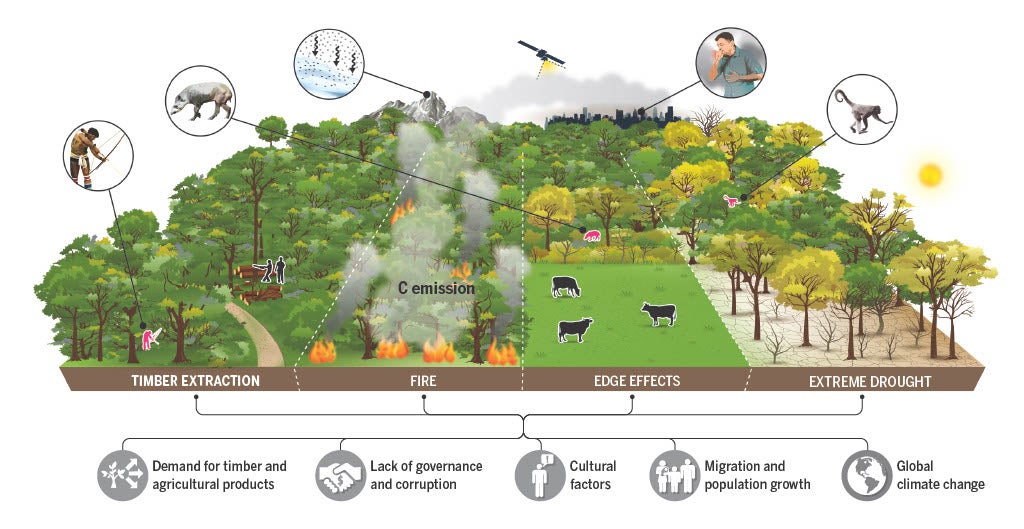People are killing off nearly 40% of the remaining Amazon rainforest
Degradation has caused emissions equivalent to cutting down trees
Your support helps us to tell the story
From reproductive rights to climate change to Big Tech, The Independent is on the ground when the story is developing. Whether it's investigating the financials of Elon Musk's pro-Trump PAC or producing our latest documentary, 'The A Word', which shines a light on the American women fighting for reproductive rights, we know how important it is to parse out the facts from the messaging.
At such a critical moment in US history, we need reporters on the ground. Your donation allows us to keep sending journalists to speak to both sides of the story.
The Independent is trusted by Americans across the entire political spectrum. And unlike many other quality news outlets, we choose not to lock Americans out of our reporting and analysis with paywalls. We believe quality journalism should be available to everyone, paid for by those who can afford it.
Your support makes all the difference.More than a third of the increasingly vulnerable Amazon rainforest has been degraded by human actions, new scientific research has revealed.
Up to 38 per cent of the forest, an area 10 times the size of the United Kingdom, has been affected.
The damage is being driven by four key disturbances - fire, selective logging (including illegal practices), extreme drought and so-called “edge effects”, the changes that occur next to deforested areas.
Degradation is defined as the damage that people inflict on the forest over the long or short-term. It’s different from deforestation, cutting down trees to change the land use for agriculture, for example.
The Amazon rainforest is a natural buffer to the climate crisis, absorbing vast amounts of planet-heating carbon dioxide. However as the dense forest is slashed and burned, it is moving dangerously close to a tipping point where it will become a net carbon emitter, scientists have warned.
The new study, carried out by an international team of scientists, examined data on the Amazon from 2001 to 2018. They found that the level of degradation was far greater than previously understood and had caused emissions equivalent to, or greater, than cutting down trees.
By 2050, degradation will still be a major emissions sources regardless of whether deforestation is halted or reversed, the team found.
The new study, which involved some of Brazil’s leading science institutions, further complicates the urgent question on how to save the Amazon.
Brazil’s new president Luiz Inácio Lula da Silva, universally known as Lula, announced plans to end illegal deforestation in the rainforest at his inauguration on New Year’s Day. One of his first acts as president was to reestablish an Amazon fund for sustainable development in the rainforest.
He has also appointed several key cabinet members to bolster his mission. Longtime environmentalist, Marina Silva, from the Amazonian state of Acre, was named environment minister. She held the position when Lula previously served as Brazil’s leader and spurred a huge decline in deforestation.

Sônia Guajajara, leader of the main umbrella group for Brazil’s many Indigenous tribes, made history as the first ever head of a new Ministry of Indigenous People.
The majority of Brazil’s Indigenous territories are located in the Amazon and the communities are frontline defenders of the forest and its rich biodiversity. They have been killed in increasing numbers amid invasions of their lands for illegal logging, ranching and mining.
The study noted that Amazon degradation not only has consequences for the climate crisis and loss of species but also impacts communities.
“Few people profit from the degradation processes, yet many lose out across all dimensions of human well-being – including health, nutrition and the place attachments held for the forest landscapes where they live,” said Dr Rachel Carmenta, a co-author based at the University of East Anglia.
The research team called for better monitoring of the Amazon using a mix of technology and sensors, and tighter restrictions on logging and fire-setting.




Join our commenting forum
Join thought-provoking conversations, follow other Independent readers and see their replies
Comments